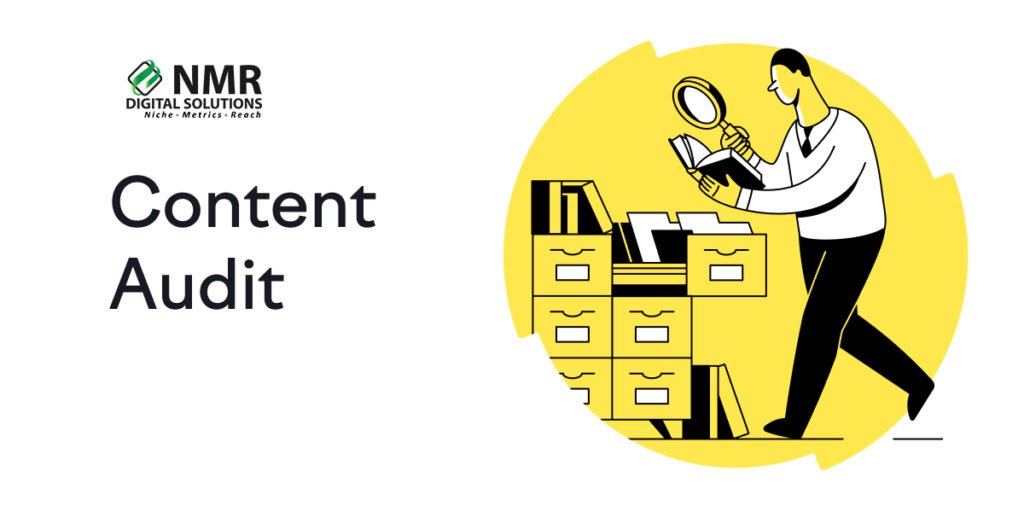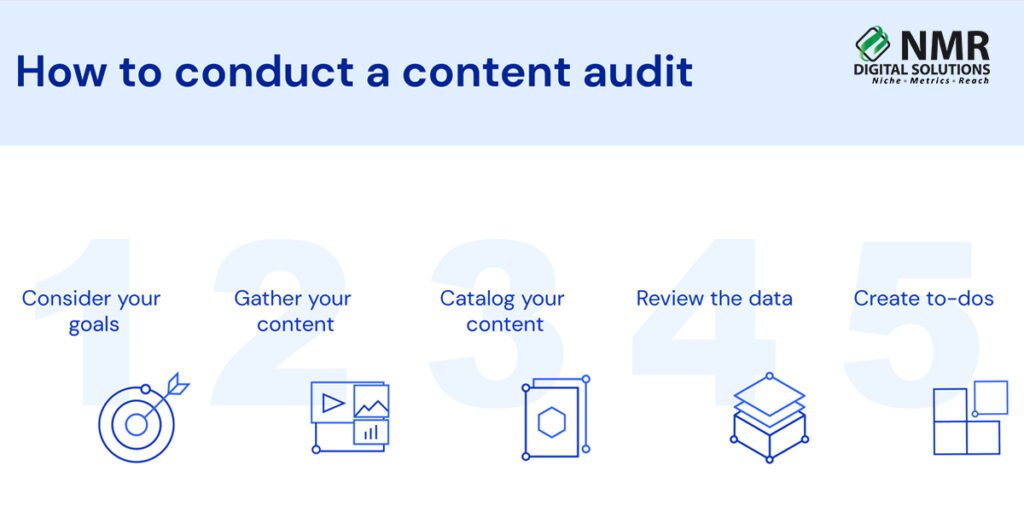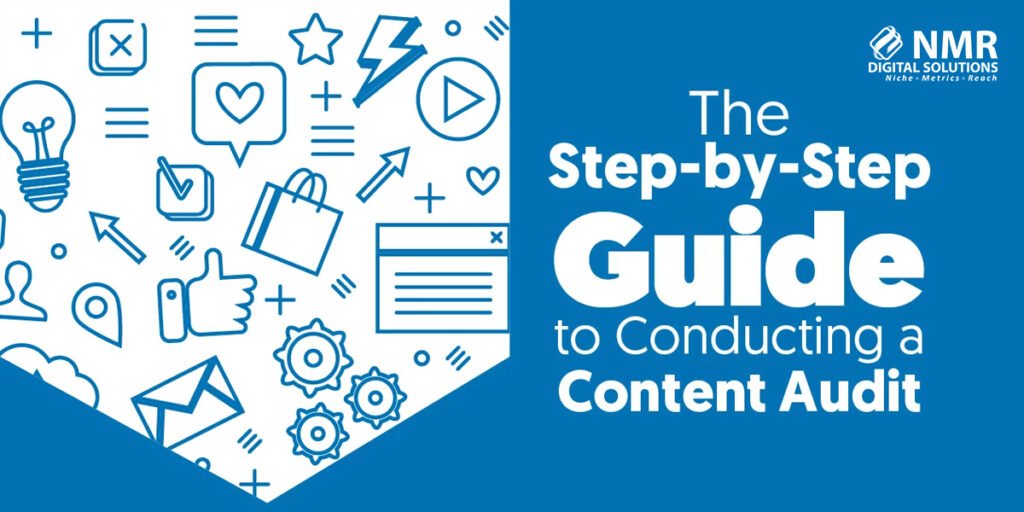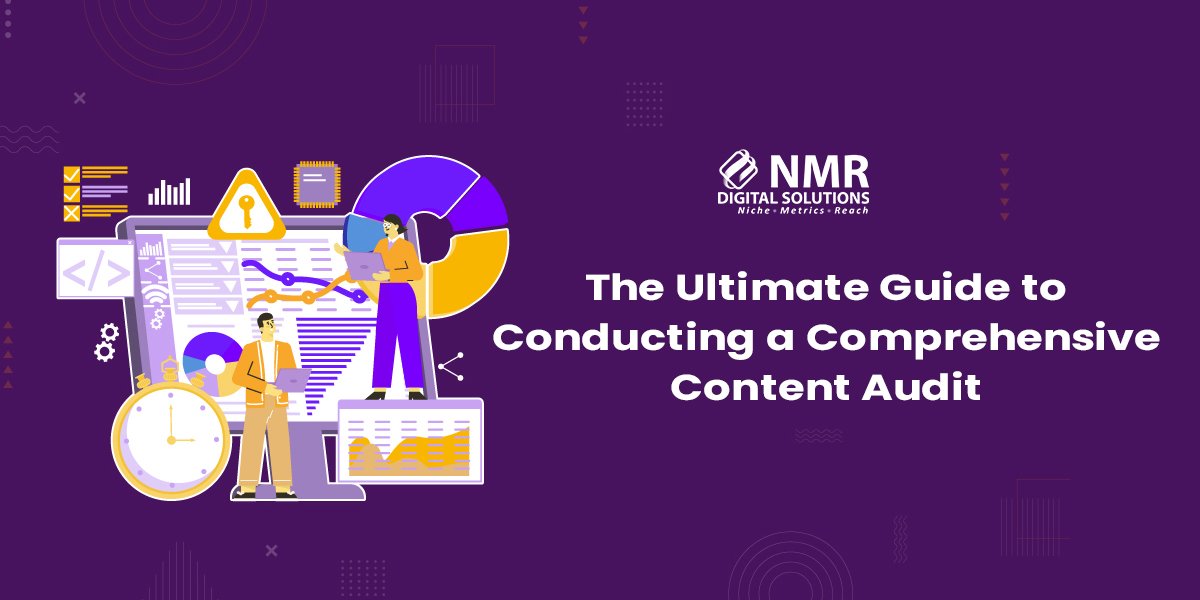Certainly, a content audit is an exact process that every business or a serious person has to undertake in the optimization of their content strategy. This involves the systematic evaluation of existing content to learn from it and find out what works and what doesn’t, combined with finding content gaps in the execution of a more effective content plan. This guideline walks you through an end-to-end content audit process that should be able to drive any content strategy to great heights.
Define the Goals
First of all, before getting into the audit, define what you are trying to achieve. This could mean improving SEO, enhancing user engagement, updating old content, or making the content strategy more efficient. These clear goals will guide your audit process and thereby help in measuring success.

Inventory Your Content
The first thing to do is a piece of content inventory in which you create a mammoth spreadsheet. This would consist of all blog posts, articles, videos, infographics, and podcasts—in essence, all forms of content you’re producing. The URLs, titles, publication dates, and so on can easily be gathered using tools like Screaming Frog, Google Analytics, or the export function of your CMS.
Categorize Your Content
Organize your content by category—either thematically, by format, or by performance metrics. Examples of such categories might include blog posts, case studies, landing pages, or social media posts. Then you can put trends and patterns into it and realize the effectiveness of your content.

Content Performance Analysis
Measure the performance of each single piece against metrics relevant to your goals. Typical KPIs in this case could be Traffic: how much traffic does each piece draw? Is the user engaged in your content by reading, sharing, or commenting? SEO Metrics: Content Rank in Search Engine Organic Traffic: Backlinks; Keyword Ranking Conversion rates: This is the effectiveness of driving desired actions such as sign-ups, purchases, downloads. Use of tools like Google analytics, SEMrush, and Ahrefs should be a good pointer here
Check on Content Quality Ensure that your content is of the highest quality, is relevant, accurate, and generally stands out. Following factors have to be kept in mind: Relevance: Would the content still be relevant to them? Would it maintain current trends and needs? Accuracy: Is the information up-to-date and correct? Readability: Well-written and easy to understand? Value: Does it provide valuable insight, solution or entertainment?
Identify Content Gaps
An effective audit will bring out gaps in your content strategy. It will include: Missing Topics: Are there key topics or keywords that you haven’t covered? Content Depth: Are there areas where you could give more in-depth information? Audience Needs: Are you meeting the needs of all segments of your audience?

Update and Repurpose Content
From the results, refresh, and optimize existing content for better performance. This might consist of Updating Old Content: Statistics, facts and references should be updated to ensure they are current. SEO Optimization: Optimize title tags, meta descriptions, and meta keywords for the best visibility on search engines. Increasing Readability: A good way to keep the user experience high is by working around long paragraphs, perhaps breaking them into bullets or supported by relevant images. Repurpose Content: For instance, convert your top-performing content to other formats.
Eliminate or Consolidate
Under-Performing Content All content is not made equal, nor does it have to be kept for an eternity. Do an audit on content to see what’s under-performing or multiple pages of similar content on the website and then decide if it needs a revamp, consolidation, or removal altogether. In all likelihood, such an exercise in the removal of old or irrelevant content will significantly improve your site quality at large and even your SEO performance.

Document Your Findings
Prepare a document with an indication of the findings from the audit and proposed actions. This would include: Summary of Goals and Objectives: What goals drove the audit Content Inventory: List all content that has been audited Performance Analysis: Key performance metrics and findings. Action Plan: High-level strategy and concrete steps toward updating, repurposing, or removing content.

Have an Ongoing Content Strategy
Continue utilizing the insights of your content audit in helping shape an ongoing content strategy. In particular, this could include: Content Calendar: Outline the editorial calendar while planning out future content that’s needing to be created or updated. Content Guidelines: Provide some guide on what is quality content, SEO best practices, and brand voice. Periodic audits of content—say yearly or half-yearly —will keep your content relevant and effective.
Conclusion
It permits bettering one’s content strategy and brings SEO benefits along. This gets one nearer to
their audience because they’re able to assess content relevance and in an organized way. This can either make or break whether your content results in a big expense or stays a valuable business asset—making sure there are no improvement areas left unattended, followed by an action plan. So start your content audit right now, to unlock the maximum from your content marketing efforts.
